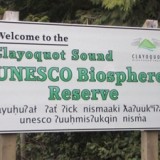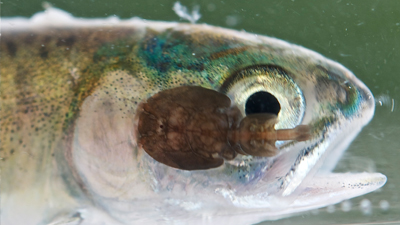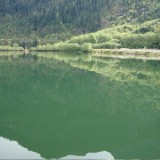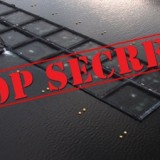Who knows where Tyson Lake is, or cares? And who gives a damn about Tyson Creek, the Tzoonie River, and Narrows Inlet?
Clearly the Federal and Provincial Governments couldn’t care less.
And maybe they don’t have to because at 9 Megawatts the company messing up the area doesn’t have to go through any environmental assessment process. In BC, if a project is under 50 MW, no process is required and, as you will see, the environmental impact of smaller projects can be lethal. (Incidentally, California doesn’t consider any hydro project over 30 MW as green!)
That’s why the “size” rule is not just stupid but hugely injurious to our environment.
Let’s look at what happened with that “little” project, above Narrows Inlet on the Sunshine Coast, which operates by draining Tyson Lake then sending it into Tyson Creek, thence into the Tzoonie River and Tzoonie Estuary. Imagine the lake as a giant bathtub, with a man-made hole and drain in the bottom.
Here’s how Scott Simpson put it last May in the Vancouver Sun:
Within a few weeks of beginning operations, the facility began releasing cloudy water into Tyson Creek – suggesting that a disturbance had taken place under the ice-covered surface of Tyson Lake and caused a large release of silt into the lake. It appears that drawing down the lake for power generation caused the surface ice to scour a delta situated at one end of the lake.
The cloudy, or turbid, water was observed in the Tzoonie River and all the way out to the river’s estuary in Narrows Inlet. (From Pollution worries halt Sechelt power project)
Here’s what Bob Price – a local resident who has closely documented the situation and submitted his findings to the authorities, with little response – has to say:
Over this past year, with constant dawn to dusk float plane, water taxi industrial noise…no mountain goats on the Tzoonie Narrows cliffs. No marbled murrelets spotted. No osprey in the inlet. No Trumpeter swans wintering in the estuary. No bears on the shoreline. No beaver seen in the Tzoonie Estuary. No owls heard at night.
And the environmental impact of bottom draining an alpine lake?
How are two massive silt dumps, into the Tzoonie watershed right when fragile and defenceless alevins are migrating from their gravel beds to the sea? The magnificent Tzoonie is home to Coho, Chum, Sockeye, Steelhead, Cutthroat and Dolly Varden. Oh yeah…Coho fry spend a year in their home river.
And when friends pulled up their crab trap, in the normally crystal clear estuary June 6, 2010… containing a freshly fillet and bloody Red Snapper as bait…12 hours later, the trap was recovered – the snapper fillet was blanketed in glacial silt…a first in 20 years also. No crabs.
Here’s how the project works (or doesn’t work!), from Daniel Bouman, Executive Director of the Sunshine Coast Conservation Association:
About the Tyson Creek IPP: This project uses Tyson Lake as a head pond. A tunnel, carrying the penstock pipe, was bored under the lake and a hole was blasted through the lake bottom to allow water to flow into the penstock and down to the generating station, after which the water is allowed to return to Tyson Creek, which has a fish bearing reach below the generating station. A re-watering pipe carries water from the tunnel back up to the creek’s natural outlet on Tyson Lake. This allows minimum flow requirements (5% of the mean annual flow) to be met.
While the project has been shut down for five months now, since the silt dump incident, the damage to fish has been done. And owner Renewable Power Corp. is seeking relief from the Fisheries Act, fearing they may go bankrupt if they are forced to stick to pollution laws and keep the siltation down to allowable levels – which could kill their project for good.
Bob Price has been onto both the Federal and Provincial governments going back some 18 months – beginning long before this disaster ever happened, which would be the optimal time for DFO and the Province to do their jobs. The province, as noted, doesn’t care because the project is under 50 MW/h. When Mr. Price first warned DFO of what had happened, the C.O. “…had no boat available.” And a DFO officer came after the worst was over and stated that he had seen no environmental damage!
In order to understand how egregious DFO’s actions have been, here are the two sections of the Fisheries Act that apply.
The federal Fisheries Act protects fish and fish habitat. Section 35 of the Act states:
“No person shall do any work that results in the harmful alteration, disruption or destruction of fisheries habitat” [unless authorized].
Section 36 of the Act protects fish habitat from pollution: “No person shall deposit or permit the deposit of a deleterious substance of any type in water frequented by fish or in any place … [where it] … may enter such water…”
And the worst is yet to come, for other private power projects on lakes in the area draining into Narrows Inlet are planned to come on stream (literally!).
Tyson Lake is only the beginning. On the way are clusters of lakes including Ramona Lake and Phantom Lake, which are presently under construction. All the projects in these clusters will drain lakes and flow into Tzoonie River – except Phantom, which will drain into Salmon Inlet. These two inlets, as noted, are a hugely important source of fish of many descriptions. This added development will magnify the impact on the Tzoonie River.
It must thus be noted that these IPPs are different than many we’ve seen because – unlike river diversions – they use lake water by draining the lake, up to 20 meters annually, into penstocks, which then go through the generator and into transmission lines.
The problem with all these projects is that there is no meaningful public process. Meetings are indeed held – usually at a place inconvenient to the interested public – and are meaningless. For by the time the meetings are held licenses have already been granted and the public has no power to do anything but make suggestions as to environmental assessment rules – which, of course, will be ignored.
It’s critical that the public understand that since the Campbell government took away the right of municipal bodies to zone these private power projects, through Bill 30, the meetings are pointless frustrations.
Here’s how Bob Price sums up:
After observing a huge siltation dump in Narrows Inlet, on March 21, 2010, and through subsequent inquiry, I discovered that an IPP worker on the shore of Narrows Inlet estuary – at the mouth of the Tzoonie River – stated that the cause of this was “a massive silt stumpage directly caused by this IPP presently bottom-draining Tyson Lake.”
This giant glob of debris rushed down Tyson Creek and has dumped a huge silt sediment glob down the Tzoonie River and an extensive residue remains in Narrows Inlet turning every bit of water light green. That silt can’t be too good for cutthroat trout and other indigenous species – coho, chum, sockeye, oysters, clams, starfish, cod, ling cod, snapper etc.
Is this impact to be expected to happen to the IPP proponent bottom-draining Ramona Lake as well? Phantom Lake, and other such high alpine lakes? The bottom part of Ramona Creek is a “blue listed” cutthroat trout stream.
Spring is the time for fish eggs to hatch and fry to work their way to the sea in the inlet. In the midst of this destructively sad, so-called “green” project and it’s massive “green” silt, the alevin are destroyed as they make their way from their gravel beds to the sea at this time of the year.
It’s bad enough that these IPPs are not only an eyesore, but they are proving to be environmentally destructive to boot. To insects, for fish food. They don’t breed in fast moving water in steel pipe. Fish don’t survive when they inhale copious amounts of fine silt. Each draw down of the lake will result in the same silt dump.
Do our stewards of the environment, federal and provincial, keep records? Communicate? Assess? Investigate? What on earth do these officials do as part of their assessment? What is the mitigation plan for such an eventuality? An immediate response is required as this sediment dump is a violation of the Fisheries Act that governs these species.
Here is where Mr. Price makes the point that we all must understand. The governments cannot be forced to be the proper stewards of our environment by the public they are supposed to serve.
You will hear Gordon (Pinocchio) Campbell say, ad nauseum, that these environmental assessments are the most stringent in the world, blah, blah, blah.
Well, folks, the old Soviet Union Bill of Rights was the greatest protection of citizens in the world. It matters not what the environmental rules and tests are if no one is allowed to examine the results, cross-examine the people responsible, and impose appropriate penalties.
Who cares for environmental rules and regulations when, as here with the Tyson Lake disaster, there are no consequences? Where else in the world can one destroy an environment and be protected against responsibility by the very people mandated to protect it?
All the above points out conclusively that the two governments cannot, in any way, be held accountable by the public. The only public hearings held are after the project is a done deal and those public hearings can’t affect the outcome any way.
The desecration of our environment continues and the public have no say whatsoever; that, dear friends, is Gordon Campbell’s energy policy.













